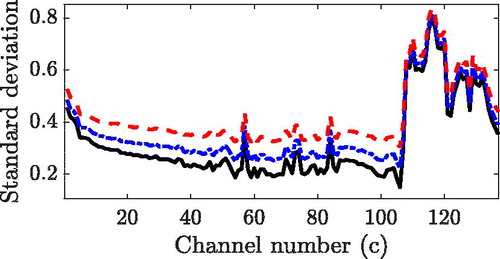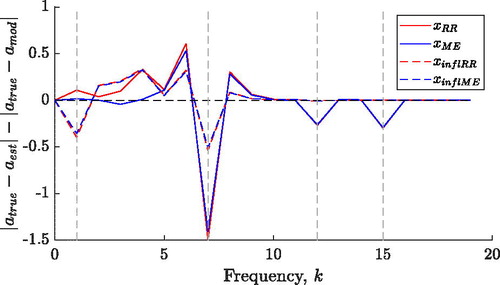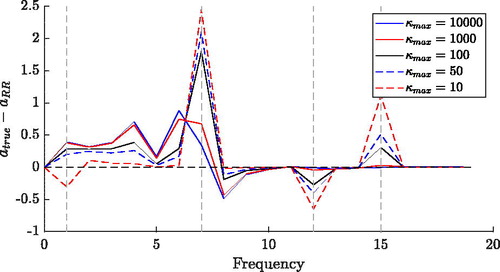Figures & data
Table 1 Change in standard deviation for the SOAR covariance matrix for both methods of reconditioning.
Fig. 1. Changes to correlations between the original SOAR matrix and the reconditioned matrices for (a) shows
(black solid),
(red dashed),
(blue dot-dashed) (b) shows
(red dashed) and
(blue dot-dashed). As the SOAR matrix is symmetric, we only plot the first 100 entries for (b).

Fig. 2. Standard deviations for the IASI covariance matrix (black solid),
(red dashed),
(blue dot-dashed) for

Fig. 3. Difference in correlations for IASI (a) (b)
and (c)
where
denotes the Hadamard product. Red indicates that the absolute correlation is decreased by reconditioning and blue indicates the absolute correlation is increased. The colourscale is the same for (a) and (b) but different for (c). Condition numbers of the corresponding covariance matrices are given by
and

Fig. 4. Change in pointwise difference of discrete Fourier transform (DFT) from to
where aest denotes the vector of coefficients of the imaginary part of
A positive (negative) value indicates that
is closer to (further from)
than
and the amplitude shows how large this change is. Vertical dashed lines show the locations of non-zero values for the true signal.

Fig. 5. Difference between atrue and aRR for different choices of κmax. Vertical dashed lines show the locations of non-zero values for the true signal.

Table 2 Changes to convergence of RR, MI and MVI for different values of κmax.
